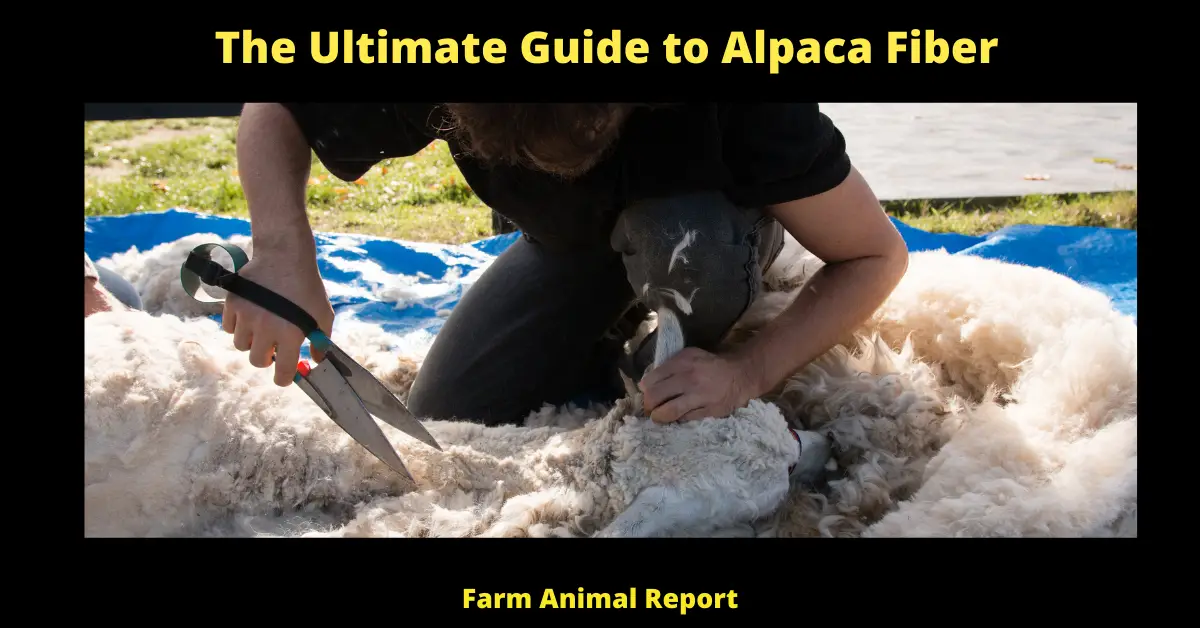.
As a general rule Alpaca fiber is a natural, warm, and strong fiber that can be found in the alpaca. There are two different types of Al Paca Fleece: The most common type comes from an Alpaiasán-made product called “Fresco”. It’s warmer than wool but less so than cashmere; it also has excellent water resistance making this fabric nearly impossible to saturate or get wet through while wearing them over time. This means they needn’t beware of exposure during rain – rather enjoy comfortable protection against icy conditions!
The Secrets of Alpaca Fiber
Alpaca Fiber – Alpaca wool is a type of wool that comes from the alpacas. It is softer than sheep’s wool, and it has many uses in fashion design. Alpaca fiber can be used to create products like sweaters, hats, scarves, gloves, socks… The list goes on! If you are interested in learning more about this versatile material then keep reading for some interesting facts about alpaca fibers!
Structure of Alpaca Fiber
Alpaca fibers are very strong.
The luster of alpaca fiber is similar to that of silk, which makes it ideal for knitting and weaving.
Alpaca Fiber is hypoallergenic.
It can be dyed in very attractive colors, including pastels and bright hues that are difficult to achieve with sheep’s wool.
The price of alpaca fiber depends on the rarity of the color type being used for dyeing. All-natural dyes are better for the environment than any of their synthetic counterparts.
Alpaca fiber comes in many different forms including yarn, roving, batting, and felt.
Because alpaca wool is water-resistant it can be used to make highly sought-after items like outerwear. It isn’t quite as strong as some other materials, but it is still relatively durable.
Alpaca fiber has the ability to be spun into an extremely fine thread, which makes creating high-quality garments possible for designers without spending a large amount of money on expensive equipment or materials.
Alpaca fiber is also quite lightweight, which makes it comfortable to wear.
Its hypoallergenic properties make alpaca clothing perfect for people with sensitive skin or allergies to regular wool products.
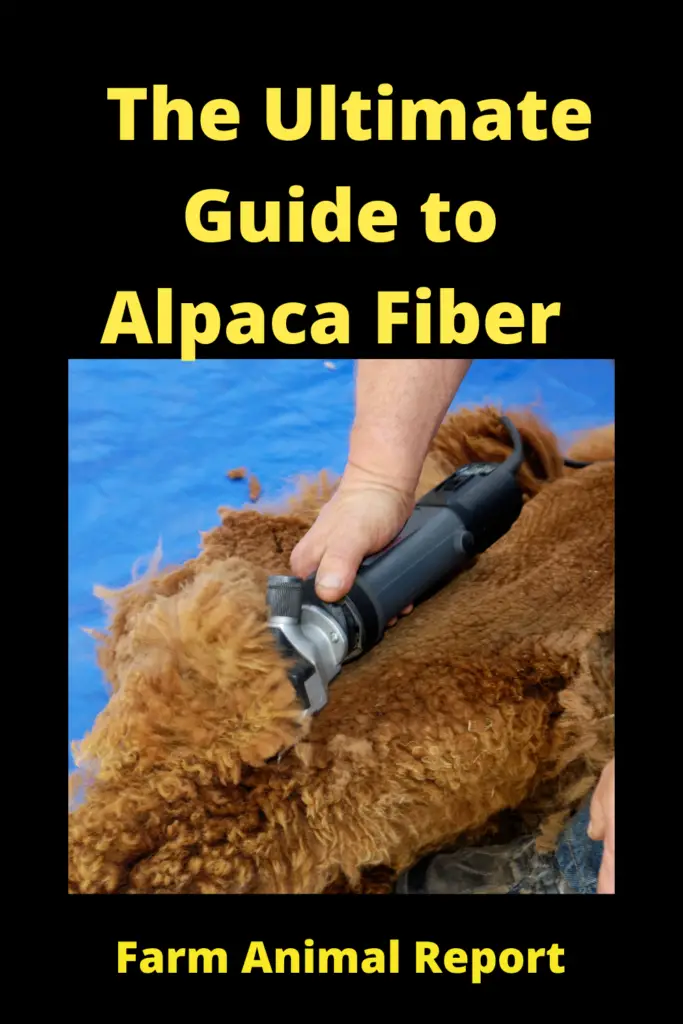
Alpacas are members of the South American camelid family that have been domesticated over thousands of years. They are grazers that can be found in the Andes Mountains. Their name comes from the Quechua word “awpaka”, which means shepherd of the plains. Alpacas were first imported to North America during the mid-1980s, and today there are over 150,000 alpacas currently living on farms across 37 states within the United States.
There are two types of alpacas: Suri (fiber is long, curly, and wavy) and Huacaya (fiber is soft with crimped textures). Alpaca fiber comes in 22 natural colors including white, beige, and black browns…
Alpaca wool has been used for thousands of years. The Inca Empire used alpaca fiber to make warm clothes for their people, and they even bred special breeds of alpacas that would help them produce more wool in a shorter period of time! Alpaca fibers were also discovered in the tomb of Egyptian pharaoh Tutankhamen where it was used as insulation material.
18 ways Alpaca Farmers make Money
Alpacas are much smaller than llamas, and they only grow to about the size of a large dog such as a German shepherd or golden retriever (which weigh around 50 pounds). They have been domesticated for thousands of years in order to help humans produce more wool by acting as shearing animals that can be shorn every year.
Alpacas are social animals that live in herds of up to 100 members within a large fenced area. These groups are often made up of only male alpacas, but there can be females living with them too! Alpaca babies (known as crias) weigh around 15 pounds when they’re born and will stay with their mothers for as long as a year after they’re born.
Alpaca wool is becoming more popular in fashion design thanks to its many unique properties that make it very desirable for use within clothes and accessories. As the demand continues to increase, alpacas are being bred at an increasing rate across North America! It’s not a stretch to say that alpaca fiber is on the rise as a highly demanded material within fashion design.
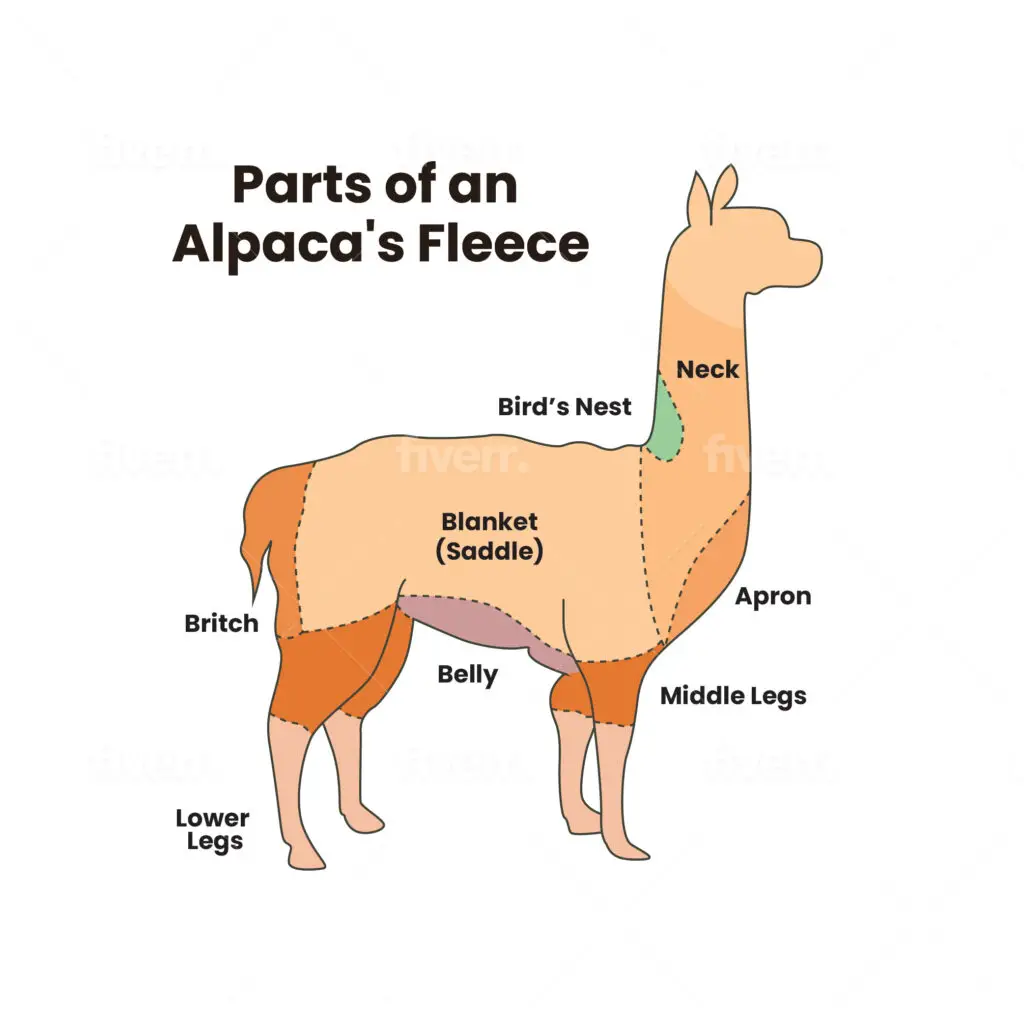
Alpaca Cuticle Cells
Cuticle cells in alpaca fiber are very thin and flat, allowing alpaca wool to absorb large quantities of moisture without feeling wet. Due to the way that cuticle cells are arranged in alpaca fiber they help repel water making it great for use as a rainproof material!
Alpacas have three different types of hair on their body: coarse guard hairs, fine undercoats, and awn hairs.
The undercoat is the layer of alpaca fiber that provides insulation during cold weather by trapping warmth within tiny air pockets found between individual fibers. It also absorbs moisture to help regulate body temperature in hot environments as well! This makes it an ideal material for use in clothing because it can be worn year-round and in all types of weather.
Alpaca fiber is also very resilient, which means that it can stand up to wear and tear much better than other materials. This makes alpaca clothing perfect for people who are looking for a long-lasting product!
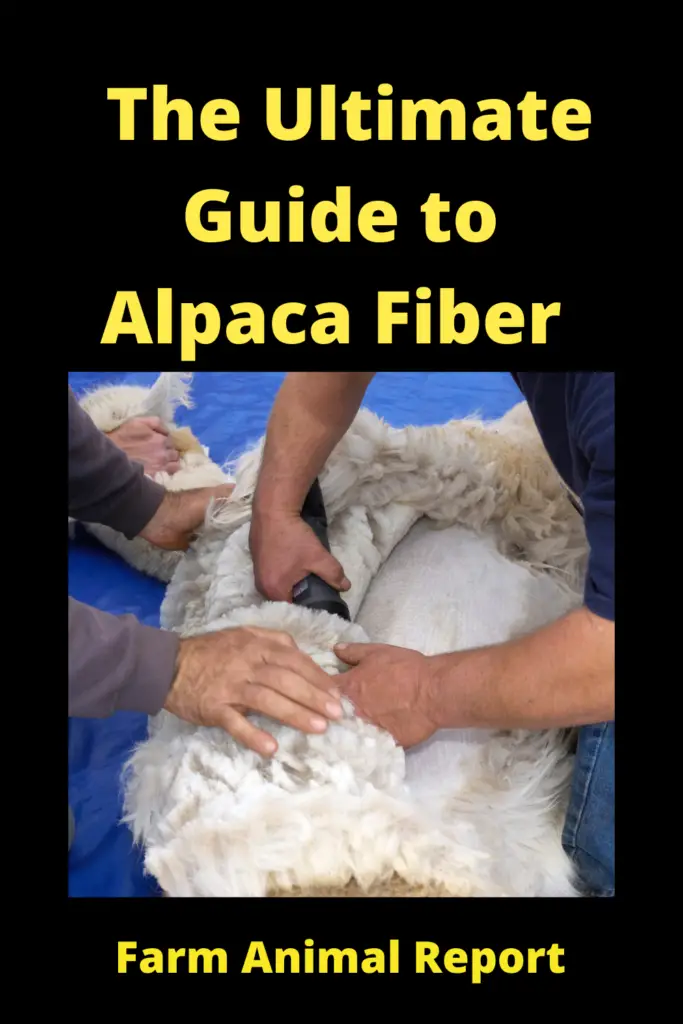
Alpaca Cortical cells
The Cortical cells in alpaca fiber are very unique and make alpaca wool very strong. The cortical cells found in alpaca fiber are shaped like a “V” which means that they have sharp points on the surface of their walls, as opposed to sheep’s wool which has oval-shaped cortical cells with no pointy bits. This shape gives them much more resistance against being poked or damaged, making them ideal for use within clothing!
Alpaca fiber can be separated into several different types based on the way that it’s processed.
Hair Alpaca fiber is found around their body and also on their face, legs, and tails. It consists of all three layers of alpaca wool: coarse guard hairs, fine undercoats, and awn hairs.
Tops Alpaca fiber is the alpaca wool that’s taken off of their bodies during shearing season. This type of alpaca fiber consists only of the soft undercoat layer which makes it extremely soft!
Yarn comes from top-quality alpacas that are sheared once a year. This variety of alpaca fiber is of the highest quality – it’s very soft, lustrous, and durable!
Suri Fiber
Suri Fiber has the characteristics of alpaca fiber but also has a unique additional type of hair known as guard hairs.
Suri alpacas are bred specifically for their Suri fibers, and they live in the harshest climates such as deserts or mountains where temperatures can reach 95 degrees Fahrenheit! These alpacas have very long and shaggy coats that help protect them from the elements.
The finer undercoat of Suri alpacas is softer than that found on other types of alpaca, making it ideal for use in luxury products!
Suri fiber has a very unique look thanks to the helical shape created by its guard hairs which are arranged perpendicularly around its soft inner fibers.
Huacaya Fiber
Huacaya fiber differs in look from Suri fiber in that it’s crimped rather than having a helical shape.
Huacaya alpacas have shorter coats and are more popular for being bred with other animals to create different types of wool such as mohair, cashmere, etc…
The fibers within Huacayas coats can be up to 30% larger than those found in Suris, which means that they can produce more alpaca fiber per animal!
In most cases, Huacayas have very soft and dense coats thanks to their undercoat being highly insulating.
There are three different types of Huacaya alpacas: dark/brown, light/fawn, and white.
Dark Brown Huacaya alpacas are the most common variety of huacaya with their fiber being rustic in appearance. They’re also the most popular for producing mohair!
Light or Fawn-colored Huacayas have a more lustrous look to their fiber due to the reddish hue that their coats naturally contain.
White Huacayas produce white alpaca fiber, which some people prefer due to its bright and clean appearance!
Follicles and Fibers in Alpaca Fleeces
Follicles are tiny sacs that contain alpaca fiber.
Alpacas generally have two to five follicles in each spot where their coat changes from thin and wispy into a denser, coarser one.
These follicles can be found on the face of an alpaca as well as along its back and tail!
When an alpaca is sheared, the follicles are cut open which allows for their fiber to be removed.
Alpaca fibers have a hollow core that makes them much lighter than sheep’s wool!
Their shape also gives them more elasticity and flexibility compared to other types of animal hair.
This combination of factors makes alpaca fiber ideal for use in sweaters, socks, or even gloves!
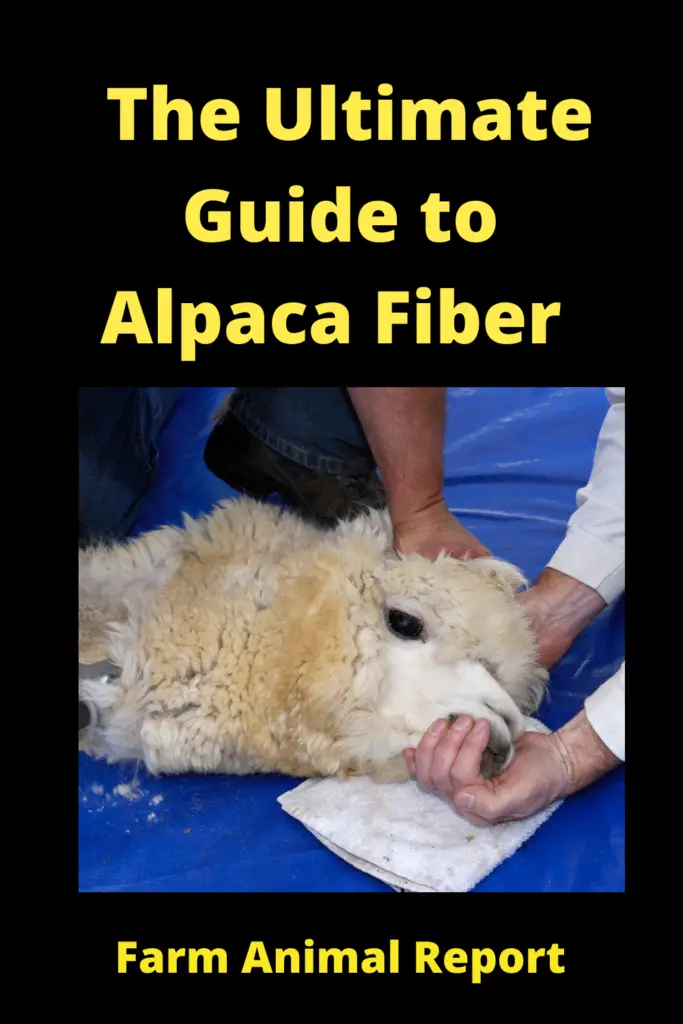
The Characteristics of a Quality Fleece
The qualities of a quality fleece are determined by the characteristics of its individual alpaca fiber.
Alpacas are sheared once a year in order to harvest their fleece, which means that it can be difficult to find one with an ideal length and density.
Ideally, you want your alpaca’s fleece to have:
– A bright luster
– Good crimp (the alpaca fiber should be wavy or curly)
– Moderate diameter and length to density ratio
The best qualities of alpaca fleece can come from a young, healthy alpaca who has been eating a well-balanced diet.
If the animal isn’t properly taken care of, its fleece will be of lower quality and more prone to breakage.
Touch of Alpaca Fleece
When you touch a quality fleece it will have a soft and smooth feel that’s neither too coarse or wiry.
The best alpaca fleece will also have a slightly oily sheen which protects it from dirt, water, and insects!
In general, you want to avoid any alpaca fiber with visible signs of breakage such as split ends or thin spots.
Try to avoid alpacas with coarse whiskers or any that feel prickly to the touch.
A high-quality fleece will also be free of debris such as twigs, leaves, and seeds!
If you do find some of these things in your alpaca’s fiber it might not necessarily mean that they’re of poor quality though.
Some animals can naturally develop debris in their fiber due to the rough surface of the areas where they live!
Histogram of Alpaca Fleece
A Histogram of an Alpaca fleece is a chart that shows how many alpaca fibers are of a certain length.
The histogram pattern for an alpaca fleece should ideally have three peaks, with each peak representing the following lengths:
– shortest – below 0.75 inches (19mm)
– medium – between .75 and .95 inch (19 and 24mm)
– longest – above .95 inches (24mm).
The short fibers are less than half an inch long, medium-length alpaca fiber is between 0.75 and 0.95 inches, while the longest of them will be more than a full inch in length!
A histogram that has a few medium-length alpaca fibers but no long ones means that the animal is young and still growing!
Their fiber will improve as they age though, so this shouldn’t be a concern unless you can see other signs of poor health.
Additionally, if the short alpaca fibers are larger than half an inch in length then it means that the animal has been sheared too much or is sick.
Healthy alpacas only need to be sheared once a year and should never have short fibers longer than this!
Alpaca Staple Length
Staple length in Alpaca fiber is the length of the alpaca fiber from the animal’s skin to its end.
Staple lengths can vary depending on whether or not an alpaca has been sheared recently, as well as what part of their body the fiber is coming from.
In general, though they will have staple lengths which are around two times longer than their height.
If an alpaca is around four feet tall, for example, its staple lengths should be between eight and ten inches in length!
This will vary again if the animal has been sheared recently though due to them losing some of their fiber during this process.
Staple length can also help you determine how old an alpaca is if you can’t find a birth date for them.
If they have short staple lengths then that means that they’re younger and still growing, while longer ones indicate that the animal has been around for at least two years!
Alpaca Micron Count
The Micron Count in fleece is the average diameter of the alpaca fiber and is measured in micrometers (uM).
You can find this number by using a microscope that has been calibrated to show measurements.
This will give you your animal’s diameter, then all you need to do is take their weight into consideration!
Alpacas typically weigh between 100 and 200 pounds, so if you divide their weight by ten then the fiber diameter will give you a good approximation of its micron count.
For example, an alpaca that weighs around 120 lbs would have a micron count between 22 and 24uM.
An animal with such thin fibers is likely shearing too much, which can lead to serious health problems as well as an animal who will not be able to produce enough alpaca fiber for your needs.
On the other hand though if you find that they have thicker fibers then it means that their fleece is of poor quality and should only be used in yarns!
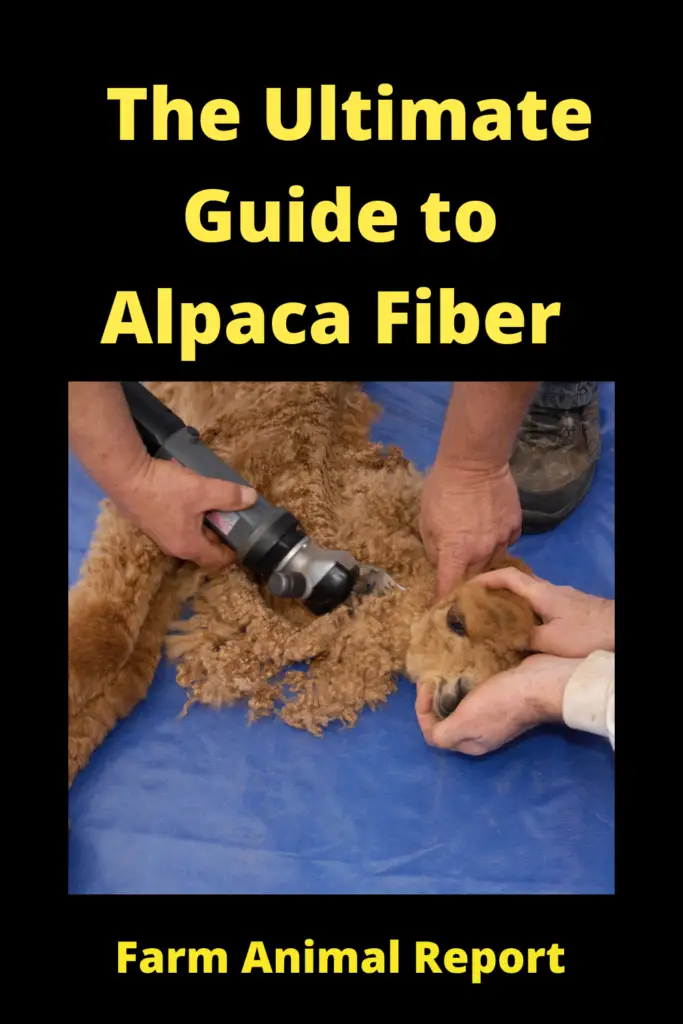
Alpaca Standard Deviation
The standard deviation in fleece is the average range in fiber diameter throughout the alpaca’s fleece.
You can find this number by using a microscope that has been calibrated to show measurements, then taking an average of all your animal’s microns.
For example, if you take ten individual fibers and their diameters are 22uM, 21uM, 18uM, 18uM, 21uM, 23uM, 19.85 uM, 22uM, and 20um then you can find your alpaca’s average diameter by simply adding up all ten of their microns and dividing it by the number of fibers you measured.
In this example, that means that your alpaca’s average diameter would be 21uM.
If you then take an average of all the microns that are within your animal’s fleece, or standard deviation, then this will give you a good idea of how consistent their fiber is throughout their body!
This can vary even further depending on whether they’ve been sheared recently, as well as if they’re older or younger.
For example, alpacas in their teens will have standard deviations of between two and four microns while adults typically only vary by around one to two microns!
This is another way you can tell how old your animal is with the naked eye when an accurate birth date is not available.
Alpaca Comfort Factor
The comfort factor is also known as the hand and it’s how you measure alpaca fleece for whether or not it will be suitable to spin into yarn.
You can find this number by taking a section of your alpaca’s fiber, with at least three inches in length, and holding them in one hand so that they’re lying in a flat line.
Then, if you can take your other hand and smooth out this section of fiber using the palm of your hand without causing any breaks in the line then it’s likely that they will be suitable to spin into yarn!
If not however their fibers are simply too coarse or uneven for them to be used in spinning which means they should only be used in craft projects!
Alpaca Flece Density
A Fleeces Density is the number of fibers that are packed into one square inch.
This is another important factor to consider when determining your alpaca’s fleece quality because the higher the density, the better it will be for spinning!
For example alpacas with an average fiber diameter (AFD) between 21 and 22um typically have a density of around 35 to 40 fibers per square inch, while an alpaca that has a fiber diameter of 26um will have a density closer to 48!
This is important information for you because if your alpaca’s fleece has lower than average AFD then that means there are fewer individual fibers packed into one square inch which makes them less suitable for spinning and more difficult to work with.
The lower the fiber density is, the less likely you are able to make your alpaca’s fleece into yarn that can be used in any kind of high fashion garments!
On one hand though if they have a higher than average AFD then it means there are more individual fibers packed into one square inch which means your alpaca’s fleece will be far more suitable for spinning!
In fact, some people have even been known to mistake alpacas with AFDs of around 24um as having an average fiber diameter of 26uM because their fleeces are so densely packed that it makes them appear to be a higher micron!
This is why it’s important for you to know and understand your alpaca’s fiber diameters as well as their fleece qualities so that you can make the best possible decisions when choosing what to do with all of those beautiful fibers.
The greater the density, the better quality an alpaca’s fleece will be which means you’ll have more options when it comes to spinning them into yarn!
This is why alpacas with an average fiber diameter of 24um are considered fine fleeced while those who fall in the 26uM or above range are known as being of very good quality!
Alpaca Regrow / Stable Length
This is a term that’s used to describe how much an alpaca has been sheared from its body at one time.
For example, if your alpaca is a spring baby and you’ve only ever had them shorn once in the past two years then their regrown length will be around 12 inches!
In addition, alpacas who have been sheared twice in the past two years will usually only grow around six inches of regrown fiber while those who are shorn three times per year may only grow a mere four to five inches!
This is because when it comes down to it alpacas need at least eight months between their annual shearings so that they have plenty of time to regrow their fiber!
For example, if your alpaca is shorn in February then you’ll likely see the best results by shearing them again around November.
Alternatively, those who are shorn just before summer will probably only need five or six months’ worth of growth before it’s ready to be sheared again!
Just remember that alpacas do not need to be shorn as often as sheep or other animals because their fiber grows at a much slower rate.
In fact, some people choose not to have their alpacas sheared more than once per year and instead keep them in full fleece all year
Alpaca Fleece Fineness
A fleeces fineness is measured in microns which is the smallest unit of fiber thickness.
Alpacas with an average fineness of 21 to 22um are considered fine fleeced while alpacas who have a finer AFD are known as being superfine!
Now, this doesn’t mean that your alpaca’s fleece will be 21um thick after it’s been sheared, but rather the average thickness of their fiber throughout their entire body.
This is why alpacas with shorter or less dense fleeces are often described as having superfine fleece regardless of the AFD because even though they may have a higher than average micron count, the lack of fiber density makes it easier for them to be spun into super fine yarns!
For example, alpacas with an AFD of 23um are considered to have a medium quality fleece which can also be referred to as being semi-fine.
This is because, despite the fact that they may have a higher micron count than alpacas with a fineness of 22um, their shorter fiber length makes them easier to spin into yarn.
In fact, alpacas with AFDs around 23 or 24 are generally considered fine fleeced because they can be spun in any kind of high fashion garment!
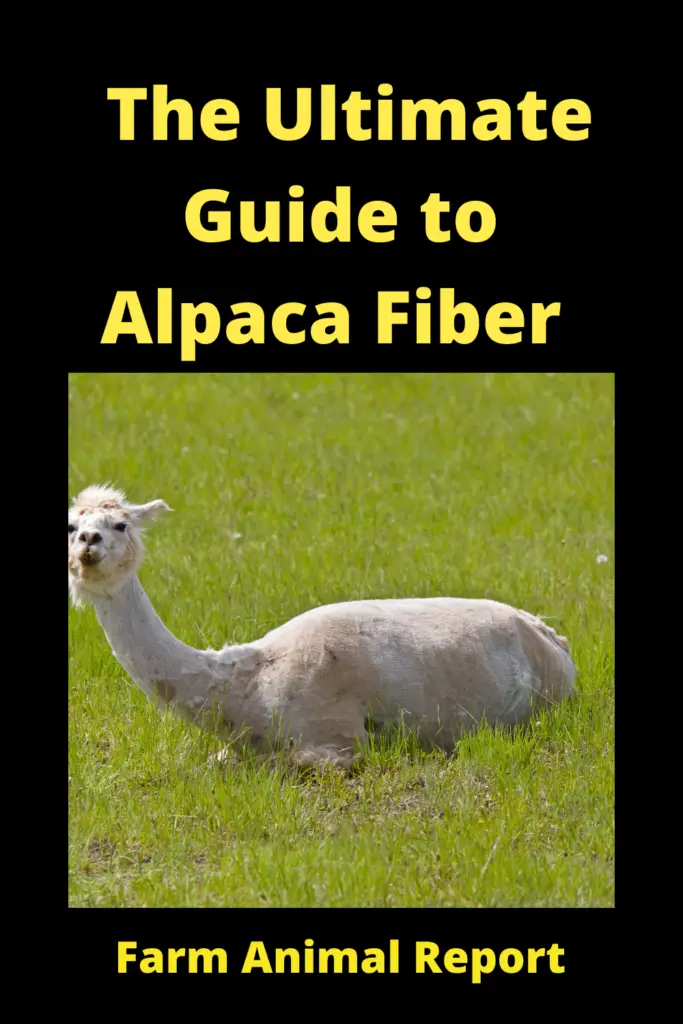
Alpaca Crimp
The crimp is the wave in alpaca fibers that gives them strength, elasticity and helps to prevent felting.
What’s more, is that crimped fiber has anywhere between four to fourteen waves per inch while non-crimping fiber only contains around two or three!
The greater the number of crimps an alpaca has then the more elastic their fiber will be!
Alpaca Lock Structure
The fibers lock structure refers to the direction in which they’re crimped.
For alpacas, their fibers lock structure is usually parallel which means that it’s easy for them to be spun into yarn without much preparation from the farmer!
However, if an alpaca has a different kind of lock structure then it can take more time and effort before they’re ready to be spun into yarn.
For example, alpacas with a 90-degree lock structure can only be combed and not carded which drastically increases the time it takes for them to become yarn!
In addition, alpacas who have an angled crimp or even wavy locks require more preparation before they can be spun and in some cases, they may even be too difficult to produce yarn from!
For this reason, it’s always best for your alpacas to have a parallel crimp because it makes them much easier to work with when it comes down to spinning their fiber into yarn.
In addition, there are two different types of crimps that alpacas have which are known as being single and double crimped!
An alpaca that has a single crimp will only contain one wave per inch of fiber while an alpaca with a double crimp will be twice that at two waves per inch.
The more common kind of lock structure for alpacas is called a double crimp and it’s also the most ideal to have when you’re thinking about producing yarn from alpaca fiber!
Final Thoughts
Alpaca wool is the finest and softest wool in the world and has many different qualities that make it easy to work with.
| Farm Name (Open Herd) Over 1200 Alpaca Farms in United States | Herd Size | Location | Contact | Price - Open Females | Males | Stud Fee |
|---|---|---|---|---|---|---|
| Flatland Farm | 18 | Kansas | Dian and Steve Trainer 21302 SW County Line Rd Rose Hill, KS 67133 316-469-9816 316-250-2231 | Open Female $2,000 - $ 6,000 | $2,000 - $12,000 | $1000 |
| Lizard Hill Suri Alpacas | 25 | Colorado | Kent and Sandy Murray 351 PURDY MESA RD Whitewater , CO 81527 970-250-7335 970-243-3520 | $ 500 - $650 | $500 - $1,200 | |
| Alpacas of Paca Meadow | 26 | Washington | Berne and Linda Thorpe 354 Bickleton Highway GOLDENDALE, WA, WA 98620 2535089757 | Call for Pricing | Call for Pricing | Call for Pricing |
| Oden Falls Alpacas | 67 | Oregon | Odin Falls Alpacas Allen Kallel 9101 NW 31st St. Terrebonne, OR 97760 Call Us 5414102324 | Call for Pricing | Call for Pricing | Call for Pricing |
| Circus City Alpacas | 23 | Indiana | Richard/Andrea Hammersley 2642 W 200 N Peru, IN 46970 765-863-3701 765-863-3702 | $ 4,000 - $5,000 | $1,000 - $5,000 | $750 |
| Alpaca Bella Fina Ranch LLC | 39 | North Carolina | Della, Shelby, Mercedes Wagnon 00000 Rocky Mount, NC 27801 1-208-315-5843 | Call for Pricing | Call for Pricing | Call for Pricing |
| Zodiac Ranch | 53 | Michigan | Linda Lundstrom 2791 North Wixom Rd. Milford , MI 48381 (248) 685-0403 248-202-0178 | $1,500 - $12,000 | $3,000 - $25,000 | $500 - $1,000 |
| Redhaven Ranch | 20 | Utah | Red & Marie Armfield 4008 W 1800 N West Point, UT 84015 801.791.7579 801.549.7779 | $ 500 - $2,500 | $ 1,000 - $3,000 | $1,000 |
| Exotica Farm Alpacas | 15 | New York | James Ward 4636 State Route 13 Truxton , NY 13158 315-289-5078 | Call for Pricing | Call for Pricing | $500 |


